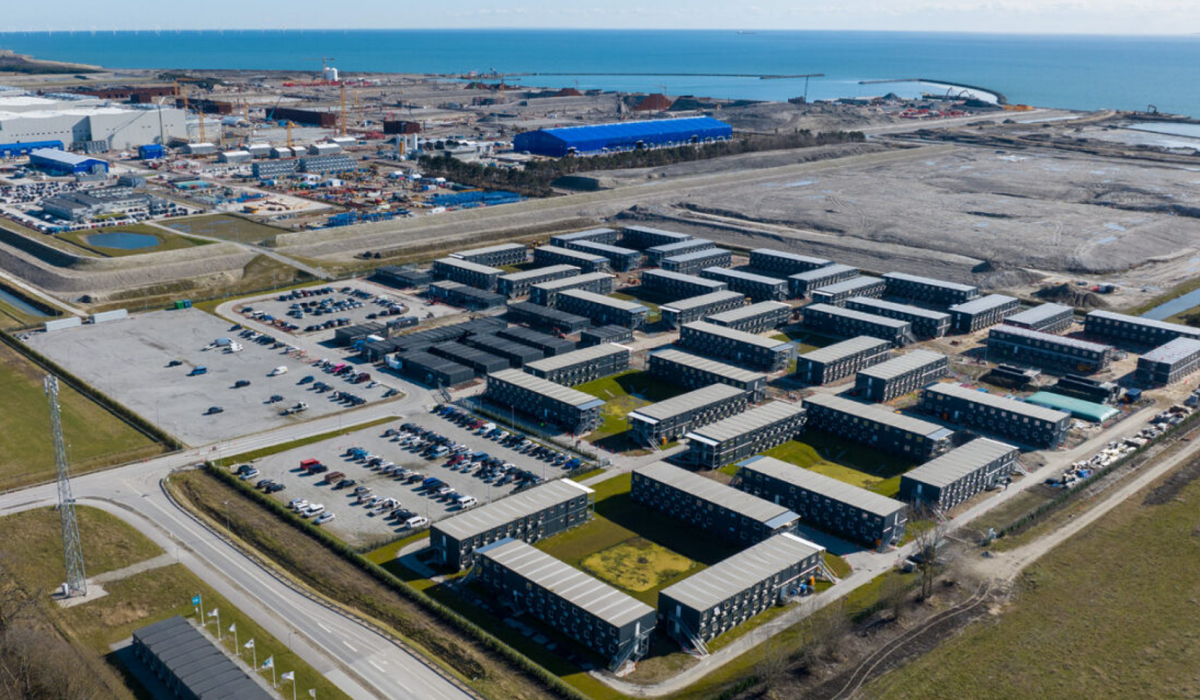Worker villages at scale
A community that grows with the project
To meet the growing demand for worker accommodation in large-scale infrastructure projects, Adapteo delivers scalable, service-integrated modular villages that evolve with construction timelines and workforce size. Two recent deployments illustrate this approach: At one site, construction began in 2020 with 12 accommodation rigs and a canteen. As the project expanded, so did the camp. By 2024, the facility included 46 accommodation rigs, three canteens, an office building, a gym, and landscaped surroundings. Once fully completed, it will cover 39,000 m² and house over 2,000 people.
In another major infrastructure project supporting a subsea transportation link, Adapteo delivered one of its largest worker villages to date. The worker village was developed on a 30,000 m² site, initially accommodating around 300 workers in private rooms. Through phased expansion, it now houses over 1,200–1,300 workers in 1,300 rooms spread across modular buildings that also include three canteens, a gym, reception, barbershop, laundry, mini-market, and landscaped community spaces. This contract, valued at over €17 million, is in place until 2027. Equipped with solar panels and heat pumps, this worker village is also the largest certified low-energy site of its kind in the country. The solar panels installed makes district heating redundant, and cuts grid electricity use by half. The village reflects a modern, high-comfort approach to labor accommodation—designed to attract skilled workers and maintain performance over long project timelines. Its modular nature allows the site to grow and shrink in sync with construction phases, reducing environmental impact and resource use by design.
Societal and climate value
These villages represent a significant improvement over conventional portacabins or scattered, temporary lodging. They also go beyond housing by functioning as small, purpose-built communities. Designed to be a 'home away from home,' they foster connection, well-being, and dignity for workers over extended project timelines. By providing high-quality accommodation, including privacy, wellness spaces, thoughtful design and layout, paired with energy-efficient systems, Adapteo’s solutions contribute to worker health, retention, and productivity.
From a climate standpoint, the reuse of modules and efficient energy systems come with reductions in embodied as well as in-use emissions. The ability to relocate and redeploy buildings further extends their lifespan, reducing the need for new construction.
Who benefited
- Workers have safer, healthier living conditions and improved well-being, contributing to greater productivity and reduced turnover
- Municipalities see reduced strain on local housing, healthcare, and social infrastructure while supporting economic activity through local services, while keeping in line with local climate and circularity ambitions.
- Industry & transition goals are met with stronger workforce strategies for delivering large-scale infrastructure, improved delivery timelines, and alignment with national green transition objectives and industry transformation
Lessons and opportunities
These cases show that worker housing is a strategic lever for meeting the evolving needs of industry and enabling the green transition for delivering green infrastructure faster, more sustainably, and more equitably. The success of these projects hinges on early planning, integration of renewable energy solutions and communal services, and a flexible, circular design. With the right policies and collaborations, this model can be replicated across regions supporting green industry expansion, improved infrastructure, or energy transition projects.



